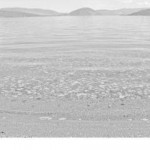It’s better to be aware of risks than to trundle through life blissfully unaware of the precautions you could be taking to safeguard yourself and your loved ones, or the minor changes you could make which would better your life.
With that in mind, our local water suppliers are to be congratulated for being proactive in an area we haven’t studied before: The biological processes deep under the surface of Okanagan Lake.
Many of our water intakes were put in place decades ago, often based on such practical considerations as how far from the pumphouse on shore piping would have to be constructed in order to reliably draw in water; or whether a larger pump would be required to draw water from the depths as opposed to bringing it from closer to the surface.
But, instead of waiting for a crisis, the Okanagan’s well-respected aquatic biologist, Heather Larratt, was retained last year to do a study of the biology of the lake at different depths and different parts, north, central and south.
Although it was prompted by one water district’s plan to construct a new intake in the lake and its desire to know the optimum depth, biologically, for such an intake, almost every water purveyor in the valley (except those using exclusively upland sources of water) agreed to participate and support a study that would include the entire lake.
What they’ve found is that some of our existing intakes would benefit from being located deeper in the lake, but also that none are currently providing their customers with water that puts them at risk from an organism that’s of particular concern, cyanobacteria or blue-green algae.
It’s a natural inhabitant of the big lake—and many others in this area—but it’s also one that can grow under ideal warm water conditions into a ‘bloom’ which could kill within a half hour if ingested by a passing animal or human.
Fortunately, it smells so malodorous that most humans would shy away from it, but dogs are not quite so particular, and there have been a number of instances of them dying from drinking lake water where a toxic blue-green algae bloom is growing.
That said, Larratt reports there have been only three documented incidents of acute blue-green algae blooms in Okanagan Lake in the last 40 years—but that doesn’t mean the algae doesn’t exist there.
It is under perfect conditions that those algae that exist grow into a mass that is of concern—in warm water with plenty of nutrients, normally on the surface.
In the past 35 years, we have built treatment plants which significantly improved the water quality in Okanagan Lake, but our population continues to grow and that can lead to increased nutrient loading, from such releases as stormwater drains laced with nitrates from fertilized and over-watered turf or farming; and from muddy runoff from disturbed ground where development or industrial activity is taking place.
As I’ve said many times before in this column, each of us can make a difference.
We have a collective responsibility to use care in our daily activities to reduce our impact on the natural environment in which we live—to our own benefit, for we rely on it for our survival.
However, armed with this study, we now know what we can do to ensure the continued safety of our drinking water from Okanagan Lake, and we also know that it is currently safe from cyanobacteria.
But, the risk of that changing does exist and we should take whatever steps we can to prevent it from becoming a risk to health.
Ironically, turning to such alternatives as bottled water is as fraught with risks as drinking water from the tap, in addition to the risks from ingesting chemicals from the bottles themselves and the impact those discarded bottles have on the environment after we’ve tossed them into the landfill.
So, drink your local tap water with confidence that our water suppliers are doing everything they can to ensure its safety.
But be aware of what you can do to help ensure it continues to be safe to drink.

